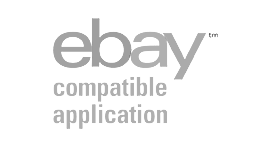(This article was last published on July 21, 2015. It has been updated for accuracy and completeness.)
While vendor-managed inventory (VMI) is not a new concept, it’s still not widely adopted by merchants. Yet, when executed correctly, a vendor-managed inventory strategy can bring huge benefits to your business (think cost savings and better customer experience).
In this post, learn what exactly VMI is, it’s benefits, and how you can implement a VMI program for any size business.
What is Vendor-Managed Inventory?
Put simply, vendor-managed inventory is a process where the supplier (or whoever you get your inventory from) takes full responsibility for your inventory instead of you. When done right, it can be an effective strategy to lower costs and prevent unintentional stock outs. VMI is what made Walmart the behemoth it is today and why their stores always have items on their shelves.
Another way to think about VMI is comparing them to auto-fulfillment programs for everyday items like printers. Nowadays when you buy a printer, you can enroll in programs that automatically ship you more ink when you need it. By allowing the printer manufacturer have access to your printer’s data, they can accurately send you ink before you run out. Paying the low monthly fee can save you money in the long run. It also saves you the headache of managing your ink levels diligently and buying more ink right when you need it
How Traditional Inventory Management Works
Let’s say you’re a retailer who sells widgets that are manufactured by ABC Widget Co. In a traditional business model, you’ll forecast your sales, then order enough widgets from ABC to fulfill the sales you forecasted.
This traditional inventory management model is challenging in a few ways:
- The accuracy of your forecast is limited, so you risk buying too much or too little stock.
- You purchase and own the inventory, regardless of whether you sell it.
- You have limited visibility into whether your manufacturer can even fulfill your order once you send it.
All retailers know that excess inventory is a liability, but it’s also common that you can’t sell what you don’t have. Traditional inventory management usually leads you to purchase excess inventory to pad yourself against stock-outs. You literally have to decide what’s less bad for your business: running out of inventory or wasting money on carrying too much.
Further, traditional inventory management puts all the responsibility on the merchant to handle this critical part of your business. If you don’t have the right skillset to handle it (and most don’t), it can be overwhelming and frustrating to deal with.
Traditional Inventory Management vs Vendor-Managed Inventory
Vendor-managed inventory relationships attempt to solve these problems by sharing the burden of inventory management between the buyer and the seller. (In our example, the manufacturer is the seller and the retailer is the buyer.)
The goal of a VMI relationship is to ensure the retailer only buys what they’ll sell. By maintaining a close contact with the supplier, including sharing data through technology, the retailers can purchase stock in smaller batches, only when they need it.
Most importantly, the responsibility of inventory management is shifted to the seller (the manufacturer), who then sends inventory to buyers based on real-time demand, not through purchase orders.
With VMI, Instead of forecasting sales and buying widgets based on an estimate, the retailer relies on ABC Widget Co. (the manufacturer) to handle everything. With access to the retailer’s inventory counts, the manufacturer can maintain the retailer’s stock, making frequent, smaller shipments of product.
Typically the VMI process is facilitated with technology. In the past, that technology has been EDI (electronic data interchange), a standardized messaging protocol that allows the systems of both the buyer and seller to communicate directly.
(Remember, the retailer needs to be in frequent contact with the manufacturer to maintain enough stock to sell, without over-buying.)
Today’s vendor-managed inventory solutions though use more modern communication standards like APIs (application programming interfaces) and XML (extensible markup language), but that’s going down a technical rabbit hole that we needn’t go down right now.
Vendor-Managed Inventory Benefits
The best part of VMI? Everyone involved can benefit!
Benefits to the Customer
At the end of every supply chain is a customer (often a consumer, sometimes a business) who actually uses the product. While they don’t have control over the supply chain per se, they do play a powerful role at the end of it. If they don’t buy a product, no one up the chain makes money.
It’s important to understand how vendor-managed inventory benefits the customer, because at the end of the day, if they aren’t winning, no one is.
1. Improved Customer Experience
The obvious benefit of vendor-managed inventory is avoiding stock outs, which can be one of the most frustrating experiences for consumers. There’s nothing worse than telling a customer that you don’t have inventory to sell or ship to them.
Ensuring you have that inventory in stock creates a better experience for your customer. When the customer needs to rely on you for something, you’re there to oblige. Positive customer experiences encourage repeat purchases and brand advocacy.
Happy customers make happy retailers.
2. Transparency
When a customer buys a product today, they care where it came from. Where was it built? Was it built using sustainable processes and products? Does the manufacturer pay a living wage to all employees?
These aren’t the kinds of questions retailers had to be ready to field just a decade or two ago. Fortunately, a vendor-managed inventory solution can help modern retailers be more transparent about where their products came from and how they’re made.
This is really just a spin on better customer experience. Customers want to trust the brands they buy. Today, they’re even willing to pay more for quality products and open production. The customer views a closer relationship with a retailer and the rest of the supply chain as a benefit. And, they will reward you with loyalty and repeat purchases.
Benefits to the Retailer or Distributor
The retailer (or whoever distributes the inventory) might benefit the most from a VMI approach.
1. Always Have Stock Ready to Sell
Retailers are constantly walking a tight-rope: excess inventory versus missing sales due to stockouts. They depend on forecasting methodologies that are sometimes no better than educated guesses.
When the vendor has close, frequent visibility into the retailer’s stock though, it can push smaller deliveries before you run out of stock. This tight relationship significantly reduces the risk of stockouts and missed selling opportunities.
According to IHL Group, Worldwide cost of inventory distortion (including shrinkage, stockouts, and overstock) is an estimated $1.1 Trillion.
Think back to the printer ink auto-fulfillment program mentioned above. We all know the frustration of running out of ink RIGHT when you’re in the middle of printing something important. The biggest selling point of signing up for the program is to avoid those moments.
2. Increased Inventory Turn (Less Inventory) + Take Advantage of Other Opportunities
With VMI, the retailer/distributor doesn’t need to hold as much inventory to ensure they can fulfill orders or sales. This means they reduce the financial liabilities of inventory and improve the closely managed inventory turnover ratio (sales ÷ average inventory).
Buying and holding Inventory costs you money. When cash is used to purchase inventory (that may never sell), that cash can’t be used to operate the business or invest in other growth opportunities. Every retailer wants to hold as little inventory as possible without running out, and that’s a tough balancing act.
With VMI, the vendor pushes inventory down to the retailer based on real-time demand. It distributes the inventory risk, so it is shared between the buyer and seller. It gets the retailer as close as possible to buying exactly the amount of inventory that will ACTUALLY sell.
Benefits to the Manufacturer
All the way at the top of the supply chain, the manufacturer also benefits from this relationship.
1. Improved Forecasting Ability
Think about how difficult it is for a manufacturer to forecast how much product to make. The ultimate driver should be how many consumers (or end customers) will buy, but the manufacturer is often separated by the customer by a few degrees–by layers of retailers and distributors.
A vendor-managed inventory solution links the entire supply chain, effectively giving the manufacturer, at one end of the chain, direct visibility into the retailer’s sales data, at the other end. With actual customer sales data, manufacturers are able to more accurately predict how much product to manufacture.
This also keeps the retailers they sell to happy. When the retailer needs inventory, the manufacturer is prepared to meet demand.
2. More Accurate Ordering and Fulfillment
Order fulfillment can be a big liability for manufacturers. If they make the wrong thing, send the wrong thing, make too much of the wrong thing, etc., it costs the manufacturer money. In traditional supply chain relationships, ordering and fulfillment can be rife with errors.
The vendor-managed inventory relationship reduces the risk of errors in ordering and order fulfillment, mostly because it digitizes the processes. Systems talk to one another directly, even across company lines, preventing human mistakes.
Benefits to Everyone
Finally, there are benefits that are shared across all parties in the supply chain, from the top to the bottom.
1. More Stable Supply Chain
When something goes wrong in a link of a supply chain, the ripple effect can impact many different organizations. For example, if a manufacturer has to shift focus to fill an emergency order for one customer, how many other customers are they delaying? You may be sharing risk with other companies you aren’t even aware of.
When the entire supply chain is linked, VMI relationships can be a stabilizer. It reduces the risk of major disruptions that can affect all the different companies that are linked directly and indirectly through the supply chain.
2. Closer Partnerships
The VMI strategy requires organizations to link their business processes and their technology platforms more closely. Ultimately, that means they are linking their businesses together, creating closer business partnerships.
When companies pool their resources, their talented employees, and their energy, all in the pursuit of shared goals, everyone benefits. These partnerships can produce more innovative solutions for consumers (or end customers) at lower costs. Cooperative business is a win for everyone involved.
How to Implement a Vendor-Managed Inventory Strategy
If implementing VMI sounds like the right strategic direction for your business, you can start with a few actions.
1. Calculator Your ROI
First, try to calculate the value of VMI for your business. If you were able to reduce your inventory by 50%, how would that impact your business? If you were able to eliminate stock-outs, how much more revenue would you generate? Understanding the potential benefit to VMI will help you monitor the eventual ROI.
2. Talk with Your Vendors
Next, talk with your vendors about improving your relationship. Even before you have technology-integrated inventory relationships, you’ll want to work closely with them. Make sure you are both on the same page. Make sure your suppliers are ones you feel comfortable building a long term relationship with.
3. Get the Right Technology
Once you’re ready, you’ll also need to implement the right technology. While traditionally VMI solutions have been driven by EDI technology, there’s newer solutions available that can be easier and more powerful to use.
To start, check out nChannel’s vendor-managed inventory solution. We can help integrate your systems so you can share your inventory and order data in real-time across your suppliers and manufacturers.






[…] how traditional inventory management has worked in the past. There was a limited amount of information about how much inventory […]
[…] Vendor managed inventory is when the customer’s inventory is managed by the supplier. This can be managed by making use of data from the customer or through physical counts. The customer’s stocks are replenished once the inventory reaches a reorder point. […]
Traditional management has been working for the past few years which is pretty good. Article is interesting but the information of inventory is not much clear. Focus on that as well. Overall, this article have a interesting facts and really helpful as well.
Most valuable and fantastic blog I really appreciate the work which you have done, many thanks, and keep it up. Very useful info. Hope to see more posts soon! I really like to read this post, it shares lots of information with readers.